Clivias with coloured leaves are very interesting. There are different types of leaf colouring. The most common plants are those with longitudinally striped leaves. There are very different types here. The simplest is the Shima Fu.
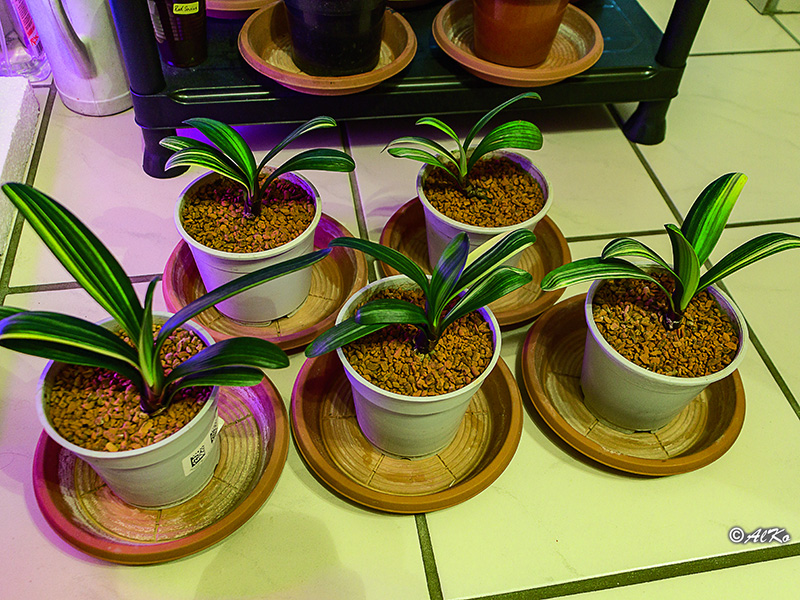
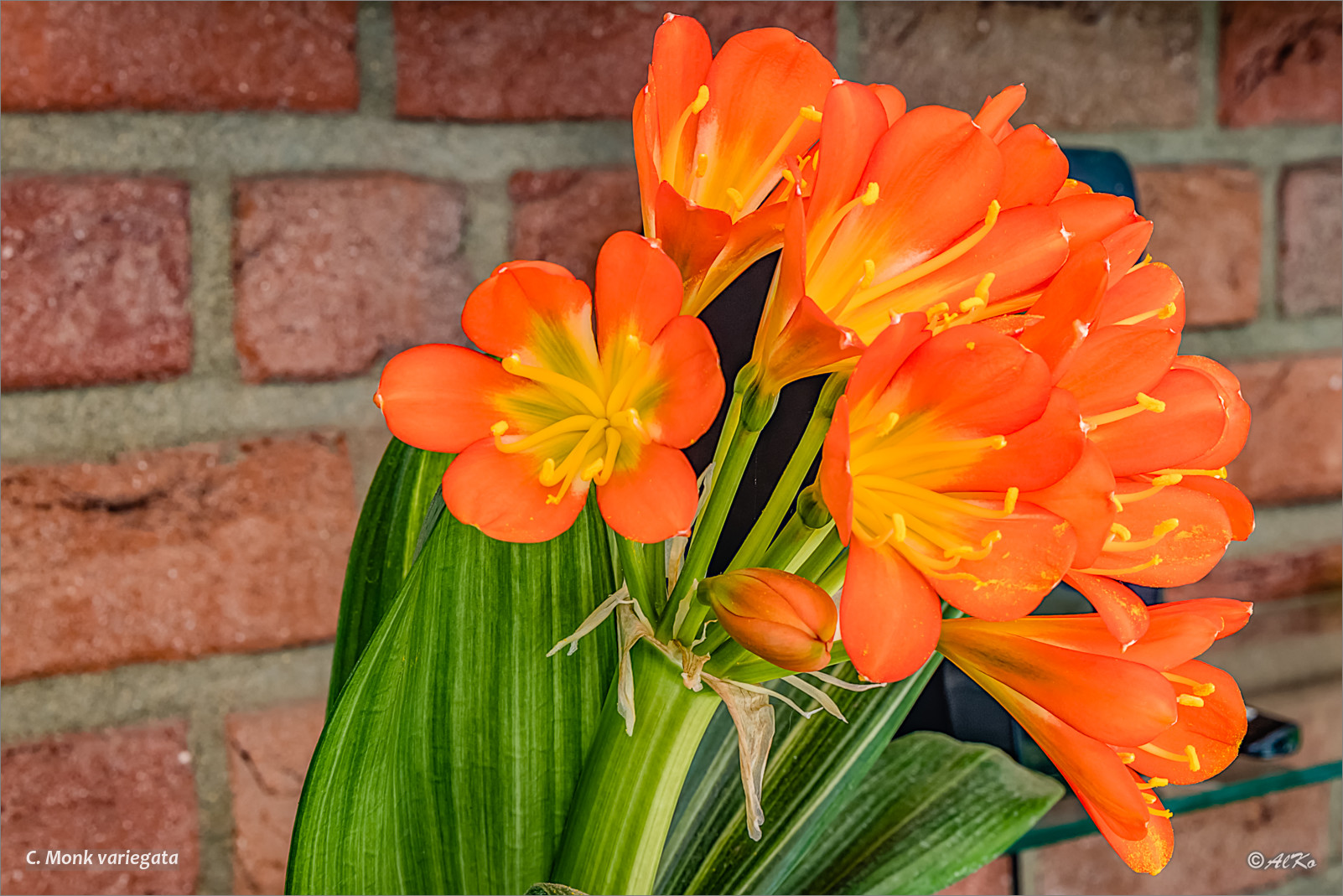
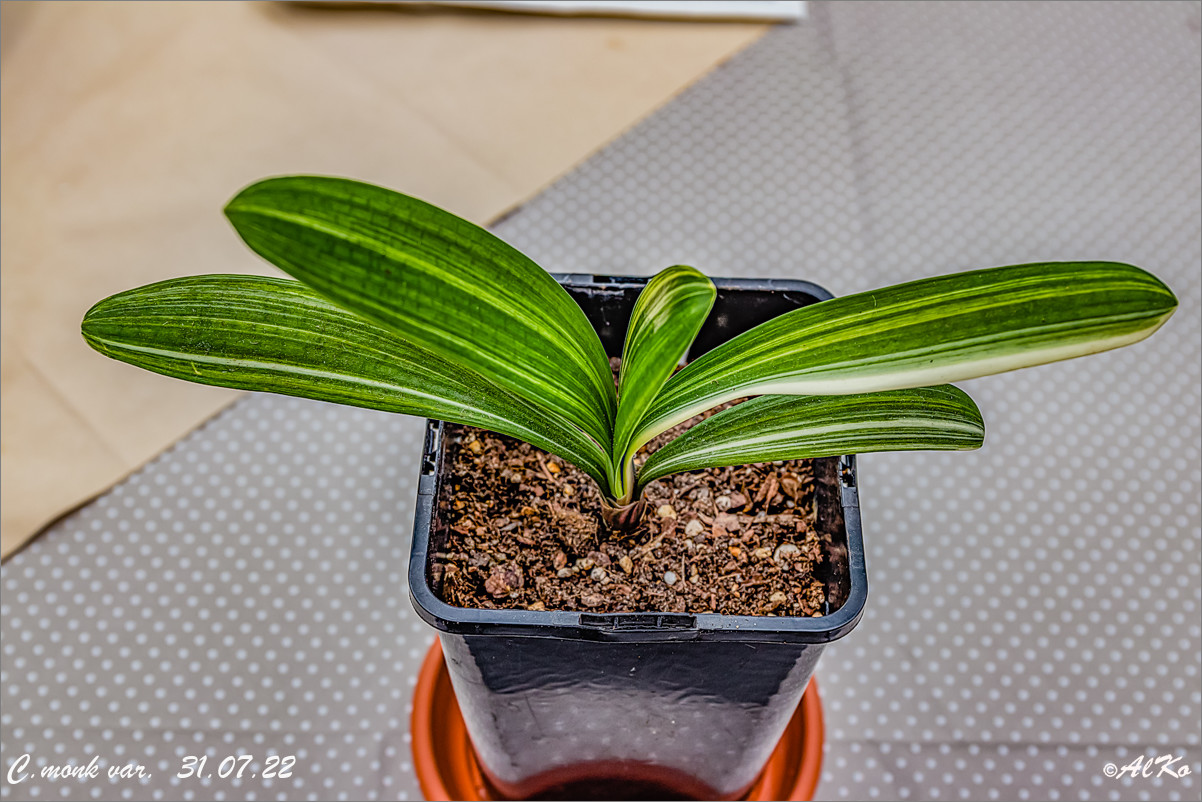
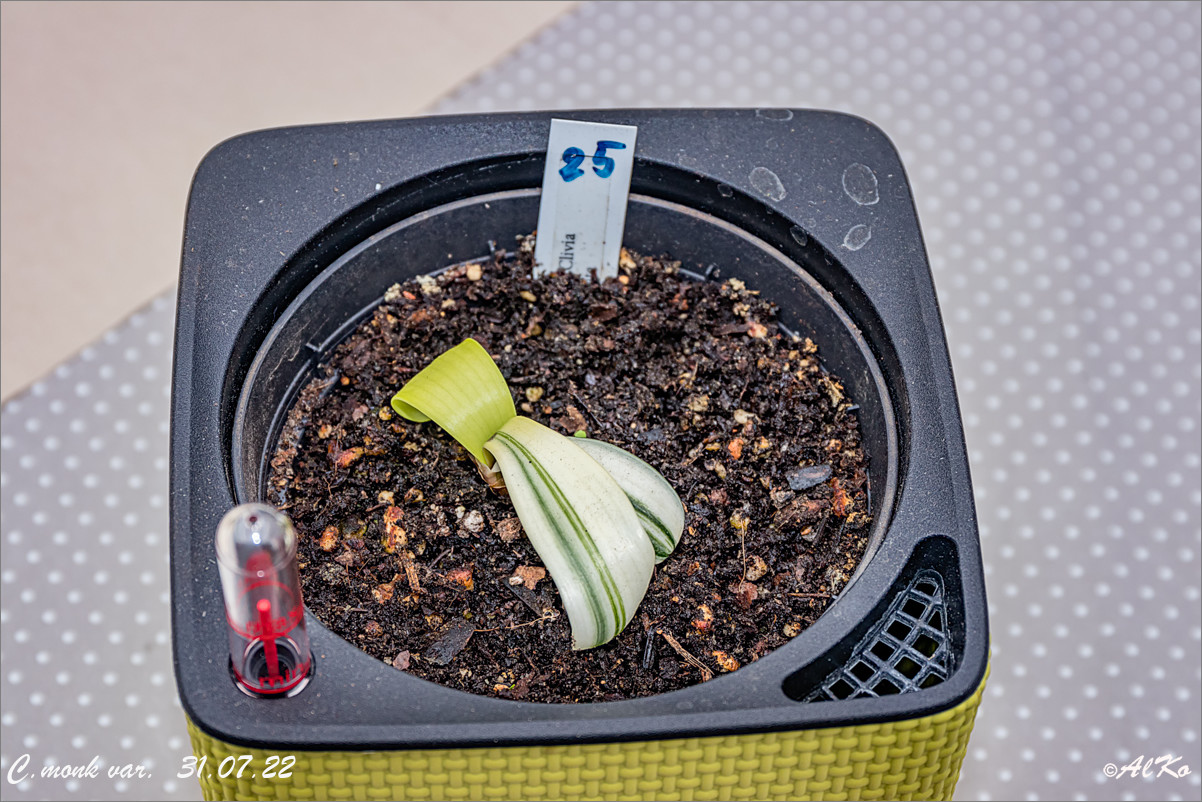
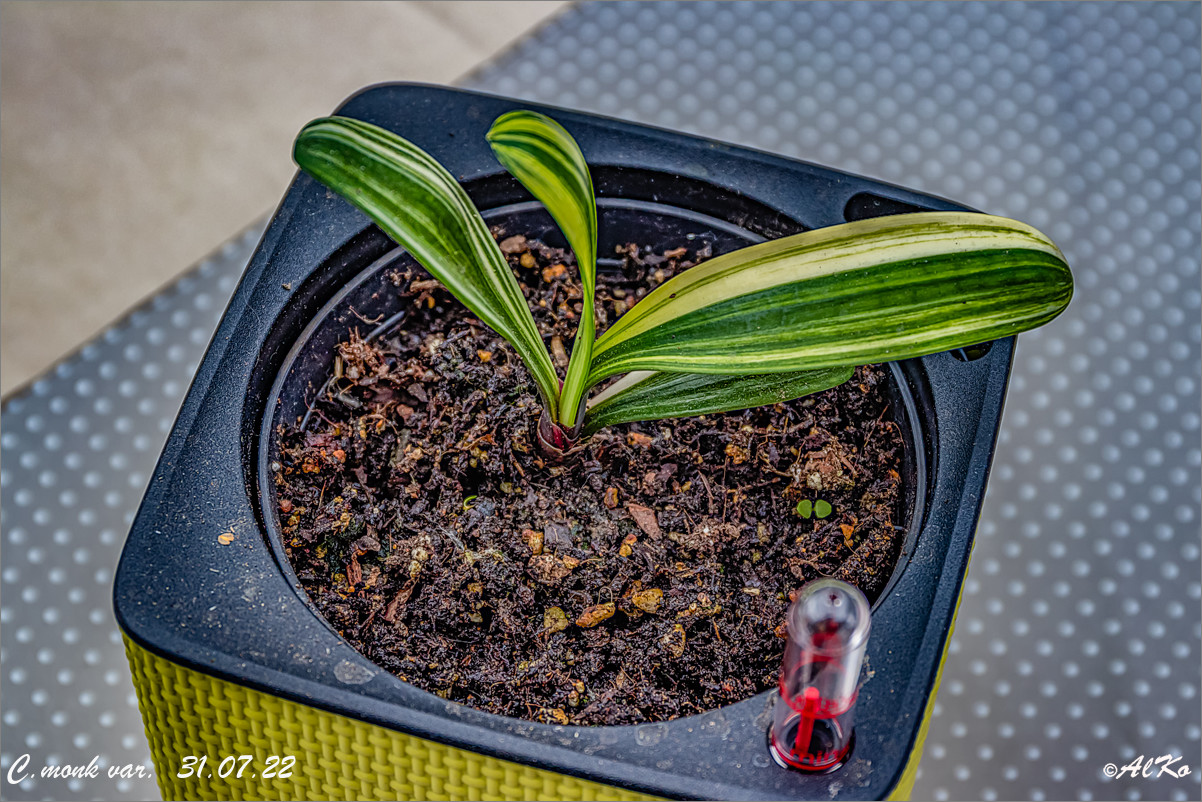
The word Shima simply means stripe. Plants with longitudinally striped leaves are therefore referred to as the Shima Fu variety. However, Chinese growers also differentiate these plants according to the number of different shades of green. It is said that up to 7 different shades of green have been counted. The colour is very light-dependent. If there is too much light, the light stripes will tend to turn yellow or cream in colour
. The green colour is also affected by the incident light. The larger the light-coloured areas are, the more susceptible the plants are to sunburn. This also applies to the following plants.

A very interesting form of colouring is the mandarin duck. They have one green and one white leaf side. The aim of the breeders is to achieve uniform colouring. Breeders speak of Genpei Fu when the colouring is 50% even. The term Genpei is also used when one side of the leaf is green and the other side is coloured like a Shima Fu. A stable plant that retains its colouring for years is a stroke of luck. These are
anomalies and cannot be passed on by seed. The different colouring can be clearly seen here.
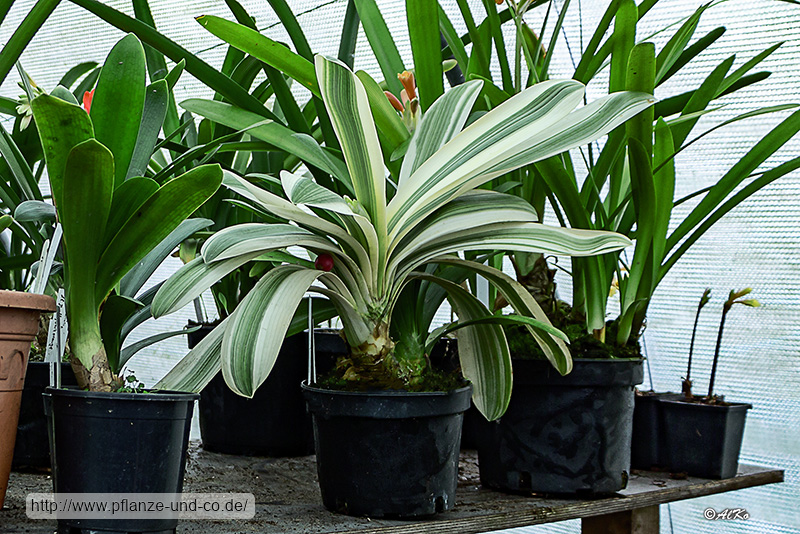
Another anomaly of the Shima Fu is the Fukurin. This is characterised by broad white margins and a green leaf centre. It is rare and generally not stable. A stable plant is like hitting the jackpot. There is no chance of obtaining a fukurin from the seeds of this plant.
The same applies to the Naka Fu. The only difference to the Fukurin is that the leaves are exactly the opposite colour. So there are green edges and a white centre in the colouring.
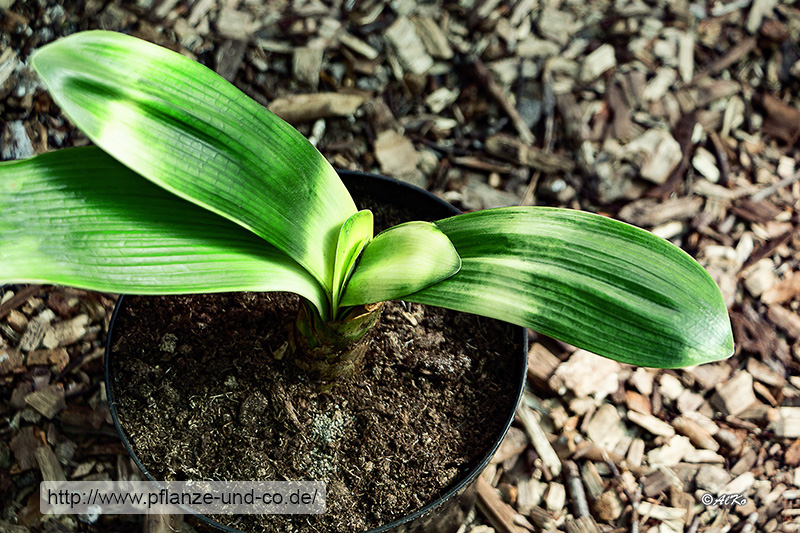
The Light of Buddha offers a further touch of colour. The green base of the leaves is replaced by a light-coloured area across the entire width of the leaf. The Starlight of Buddha, on the other hand, has many light-coloured areas spread across the leaf, which can be seen as a starry sky. The Akebono are plants in which green and white areas of the leaves are repeated several times. Here too, it is rare to get a stable plant. Plants bought as Akebono have already become LOB with increasing age.
Basically, one can always say that stable plants are rare with all plants of this colouring. One must always expect a different colouring of the leaves the following year. However, it is not really important for the enthusiast whether it is a Shima Fu or a Fukurin, but that the plant is healthy and produces beautiful flowers.
For the seed production of these plants it is important to realise that there are many exceptions to the rule of genetics. Not all characters are controlled by the genes in the cell nucleus. It will not be possible to get a variegated plant if the mother is a green-leaved plant. Even if the father is variegated. This is because the cell organelles are located in the cytoplasm and therefore represent an exception to the chromosome theory of inheritance. The rules of Mendelian inheritance therefore do not apply. As a result, only the mother plants inherit variegation. This means that no matter which pollen donor is used, the third inheritance is given with a variegated mother. So 33% variegated 33% green 33% albino (not viable). Shifts can occur - but the principle remains the same. Regardless of this, it remains a game of chance in any case.









